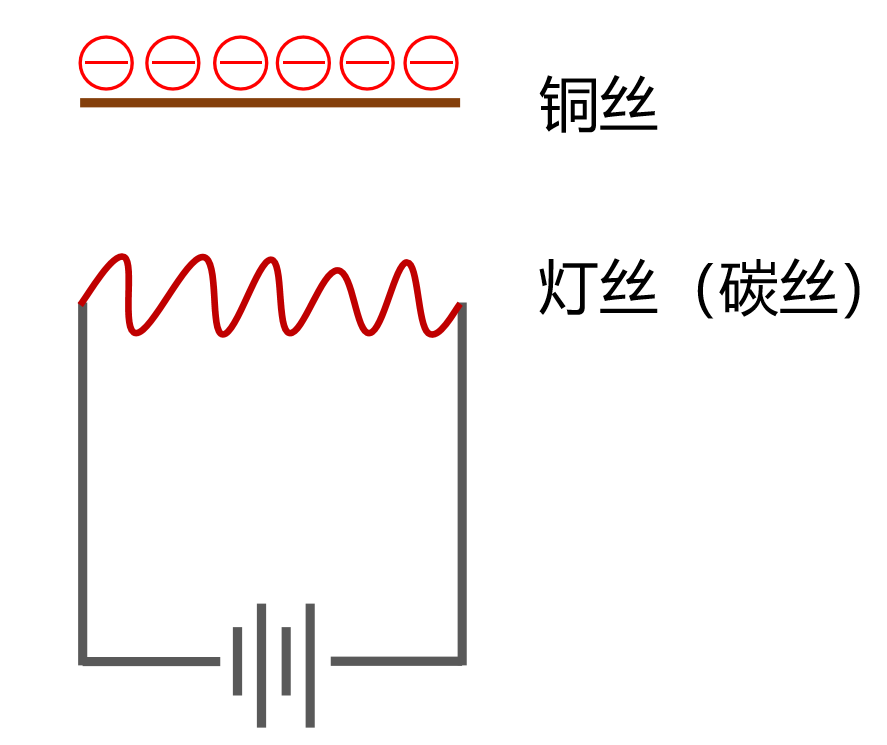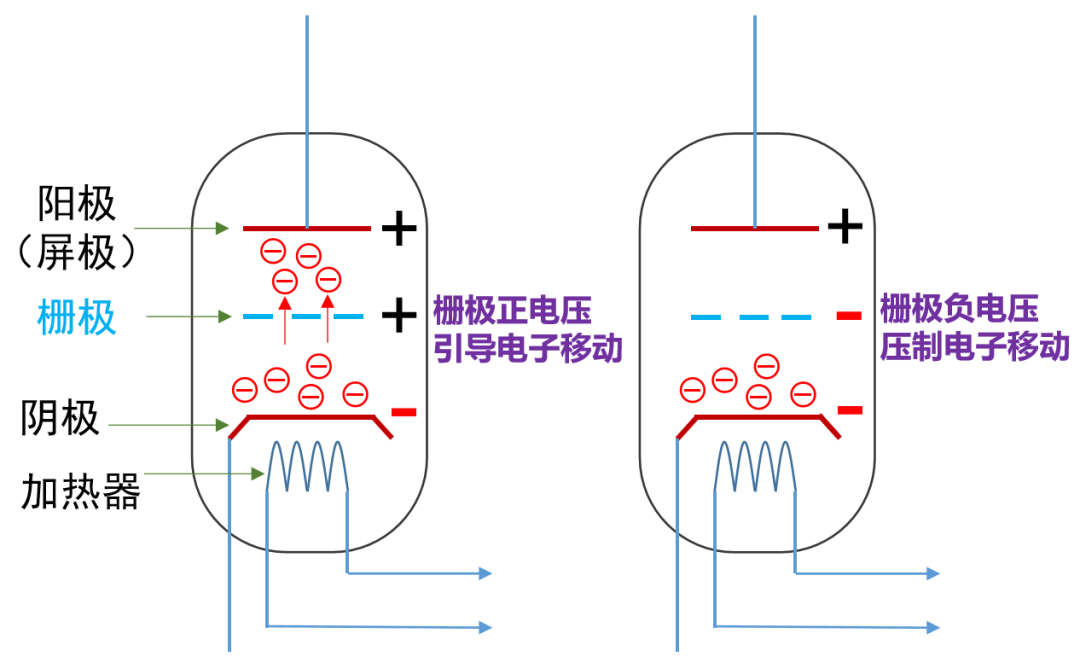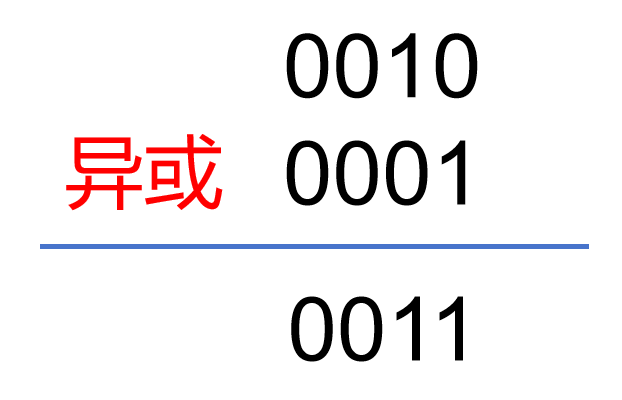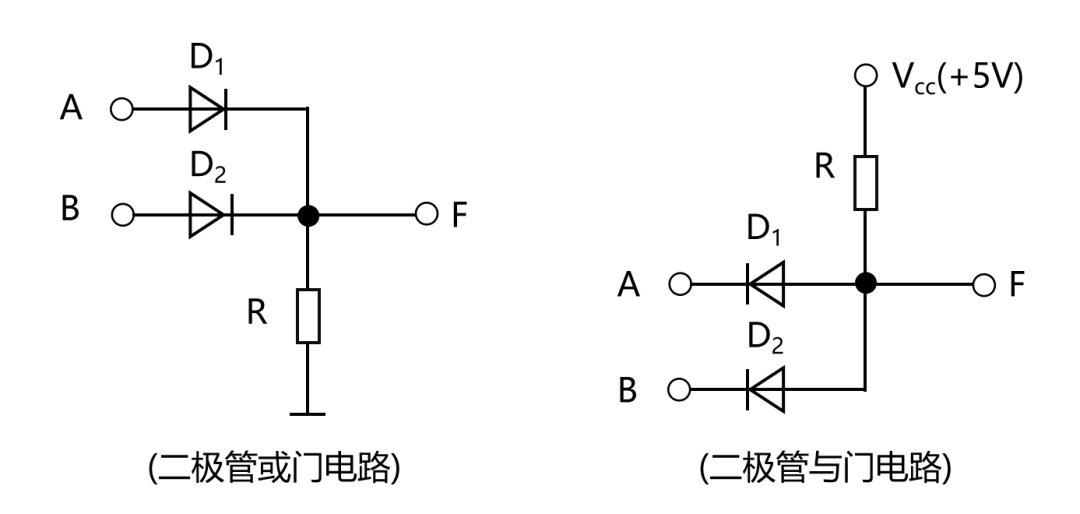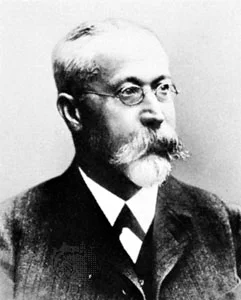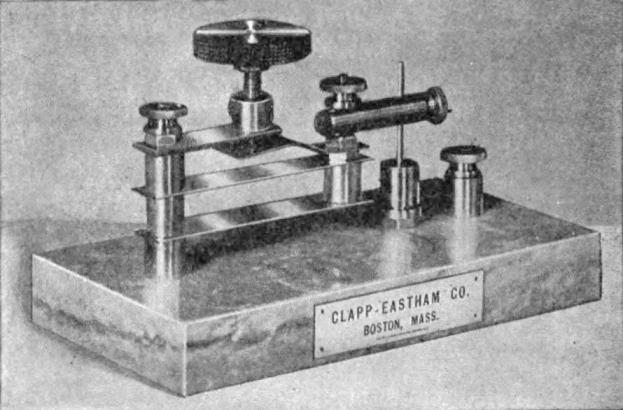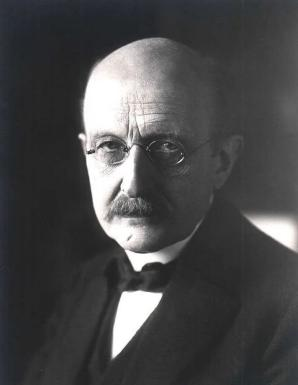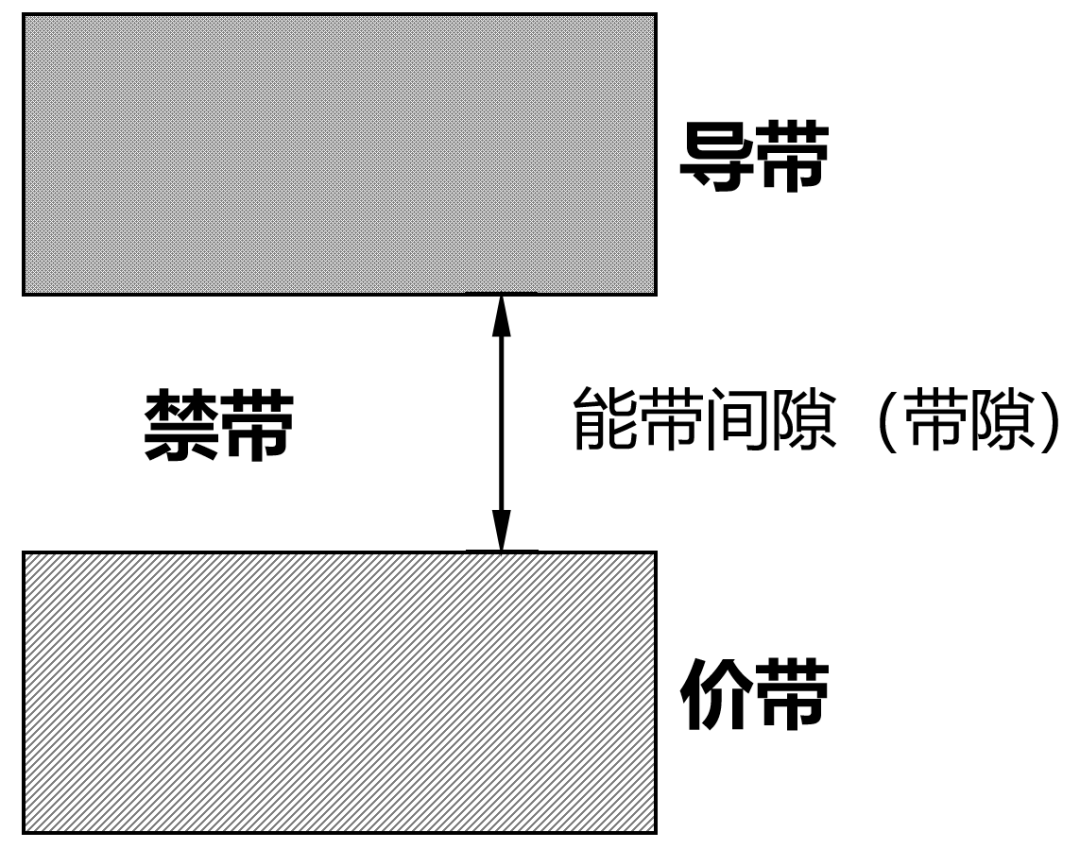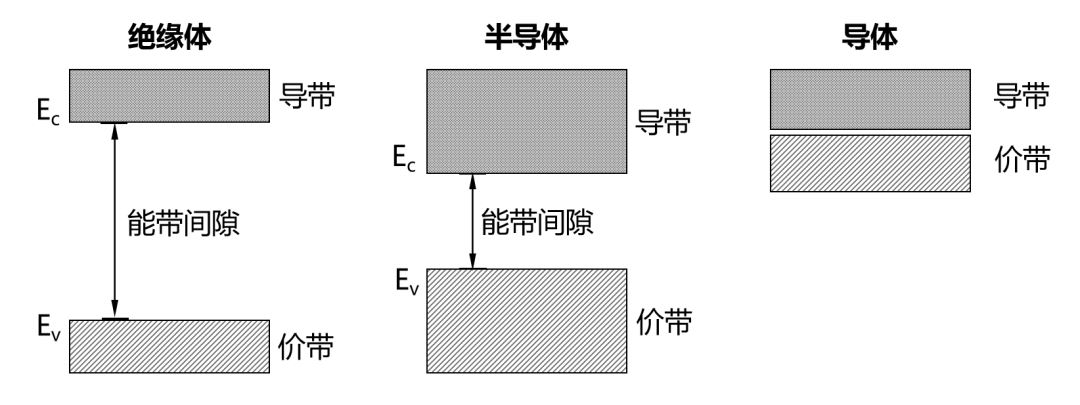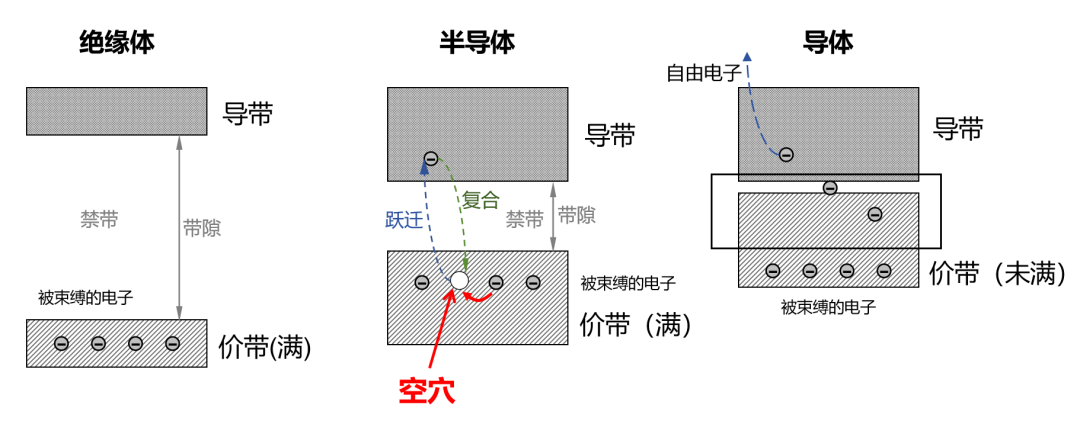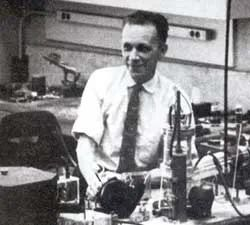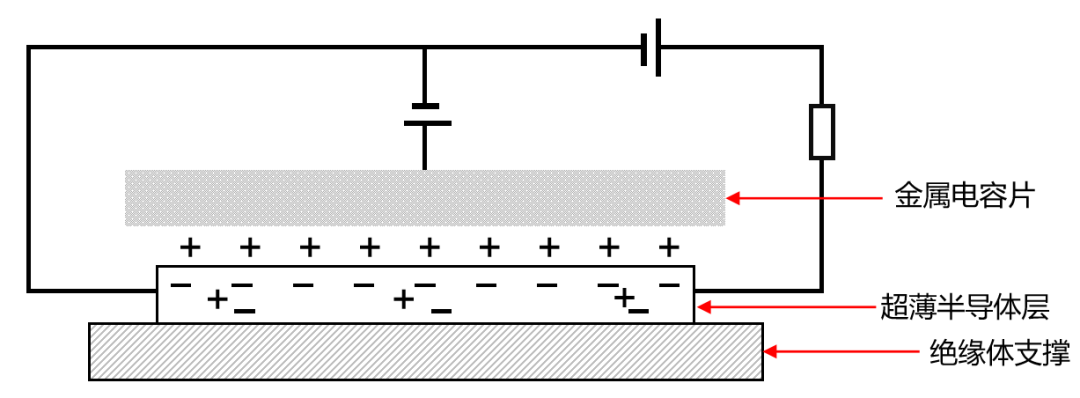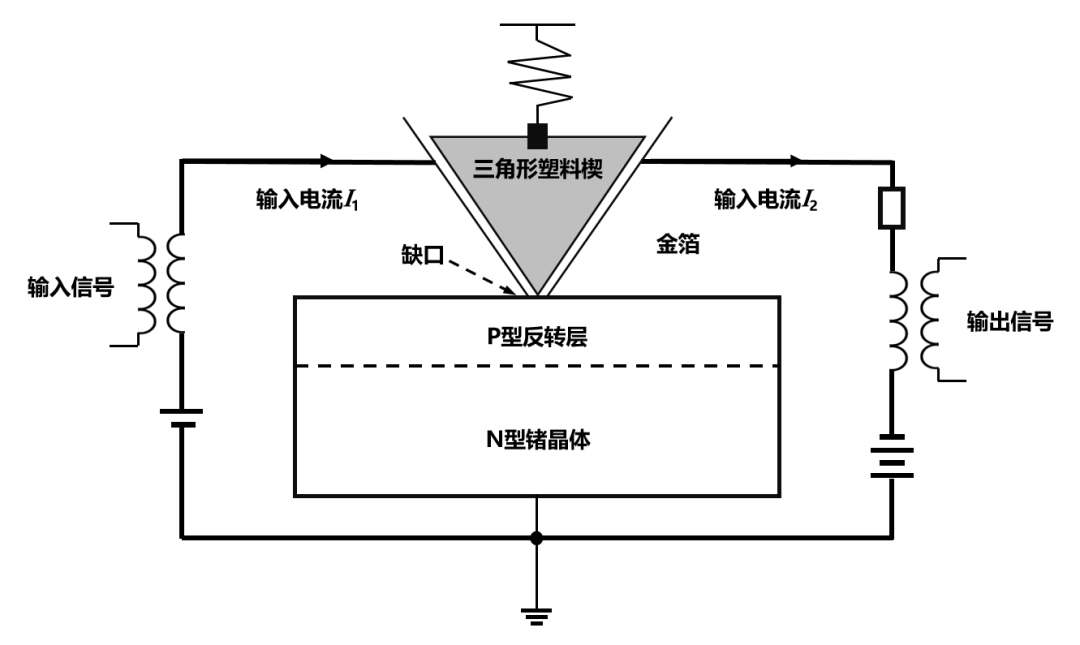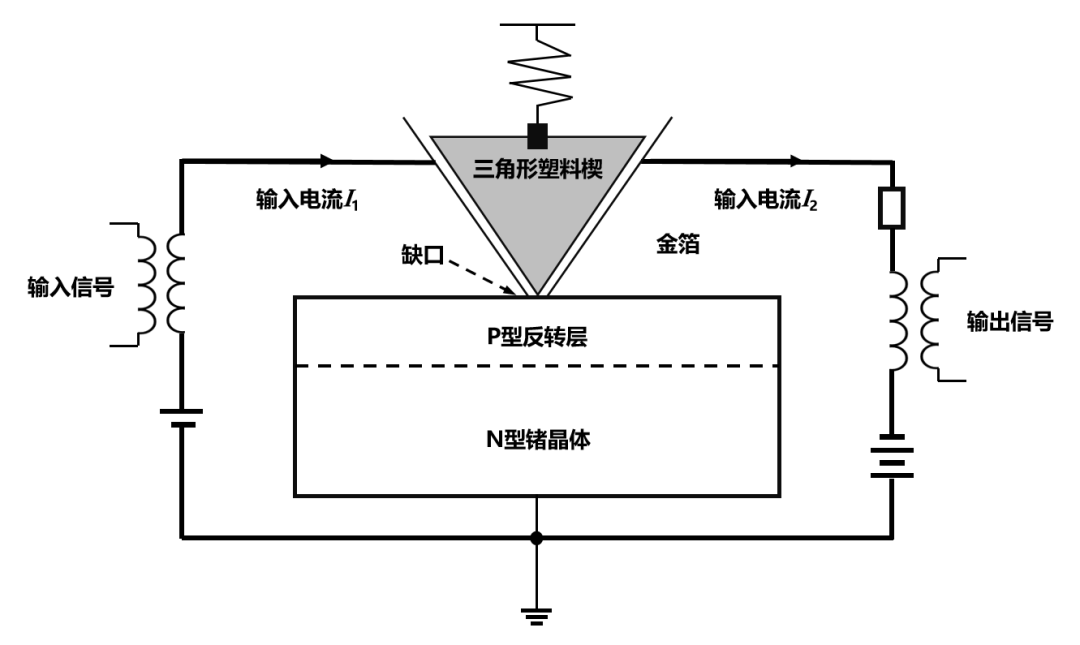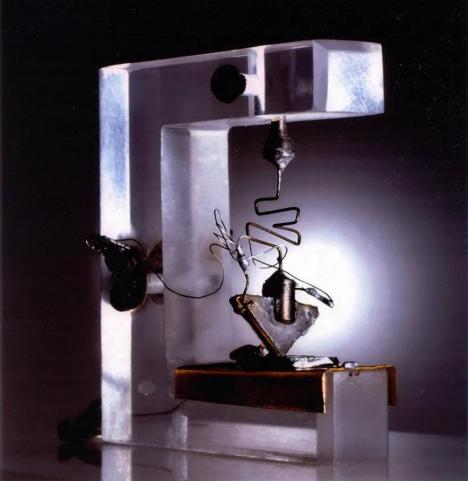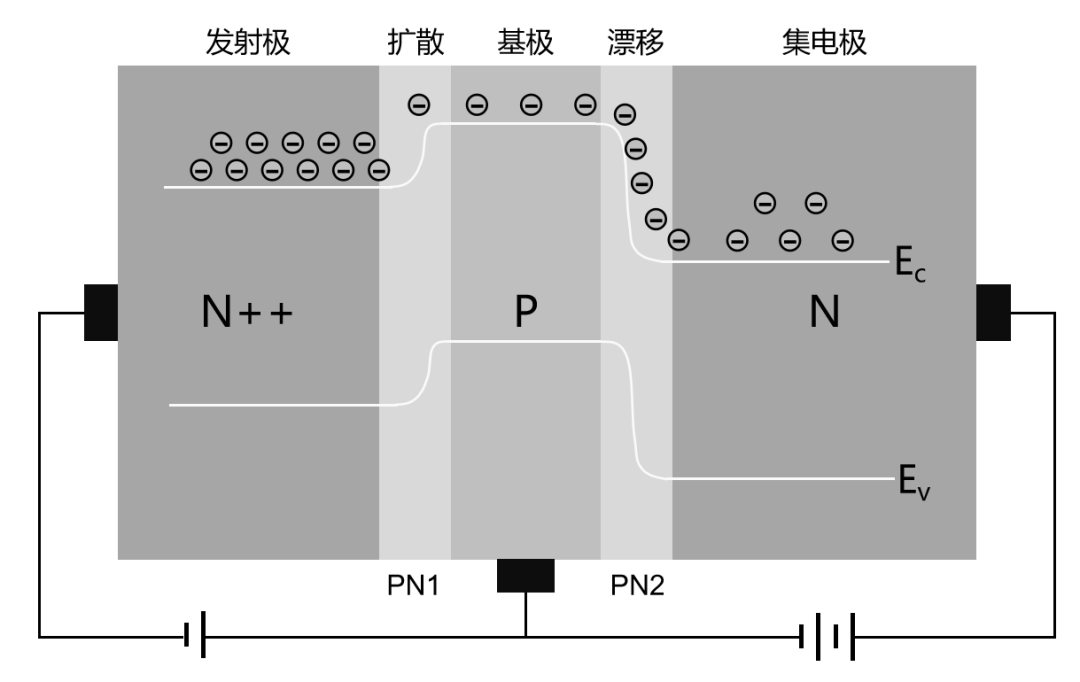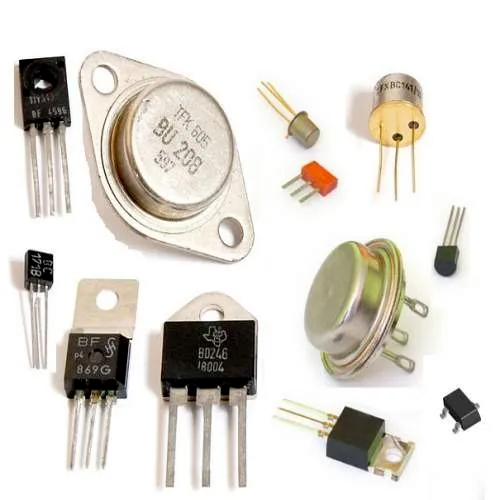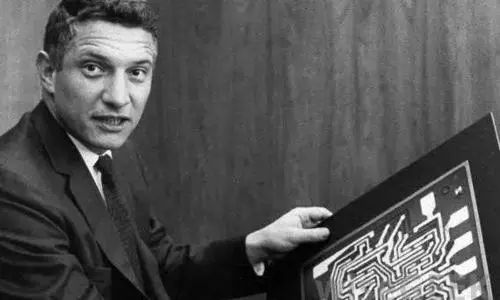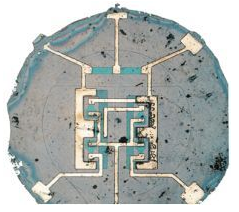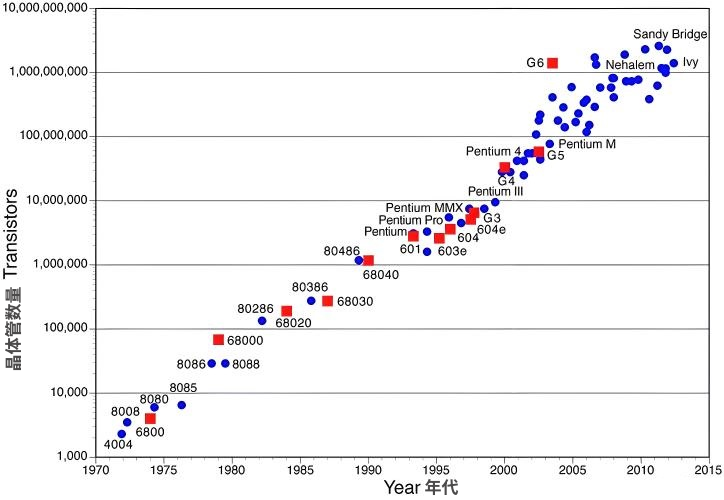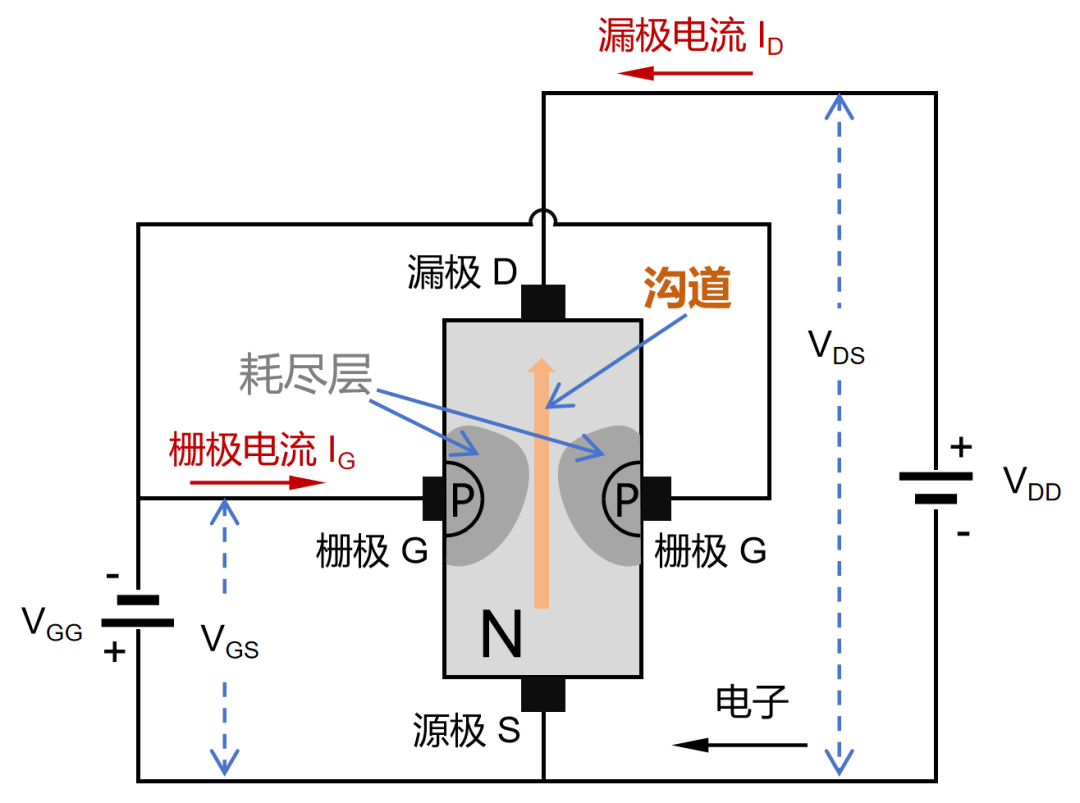The birth of the chip – from vacuum tubes, transistors to integrated circuits, from BJT, MOSFET to CMOS, how chips have developed and how they work.
█ Vacuum Tubes (Electron Tubes)
In 1883, the famous inventor Thomas Edison observed a strange phenomenon during an experiment.
At that time, he was testing the lifespan of a filament (carbon filament). Next to the filament, he placed a copper wire, which was not connected to any electrodes. In other words, the copper wire was not powered.
After the carbon filament was powered, it began to glow and heat up. After a while, Edison disconnected the power supply. He accidentally discovered that a current was also generated in the copper wire.
Edison could not explain the reason for this phenomenon, but as a savvy “businessman”, the first thing he thought of was to patent this discovery. He also named this phenomenon the “Edison Effect”.
Now we know that the essence of the “Edison Effect” is thermionic emission. That is to say, when the filament is heated, the electrons on its surface become active and “escape”, and are captured by the metal copper wire, thus generating a current.
After Edison applied for the patent, he did not think of any practical use for this effect, so he shelved it.
In 1884, British physicist John Ambrose Fleming visited the United States and met Edison. Edison showed Fleming the Edison Effect, which left a deep impression on him.
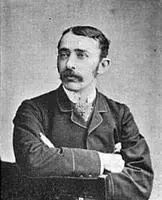
Fleming
It was not until many years later that Fleming actually used this effect.
In 1901, Guglielmo Marconi, the inventor of the radio, started long-distance radio communication experiments across the Atlantic Ocean. Fleming joined this experiment to help study how to enhance the reception of radio signals.
In simple terms, it was about studying how to demodulate signals at the receiving end, amplify signals, and ensure that the signals could be perfectly interpreted.
Everyone understands signal amplification, but what is signal demodulation?
Signal demodulation is essentially signal filtering. The signals received by the antenna are very chaotic, containing all kinds of signals. The signals we actually need (signals of a specific frequency) need to be “filtered” out from these chaotic signals, which is demodulation.
To achieve demodulation, unidirectional conductivity (unidirectional conduction) is key.
Radio electromagnetic waves oscillate at high frequencies, reaching hundreds of thousands of times per second. The induced current generated by radio electromagnetic waves also changes continuously with “positive, negative, positive, negative”. If we use this current to drive headphones, one positive and one negative equals zero, and the headphones cannot accurately identify the signal.
By using unidirectional conductivity, the negative half of the sine wave is eliminated, leaving only the positive, resulting in a consistent current direction. After filtering out the high frequency, the headphones can easily sense the changes in current.
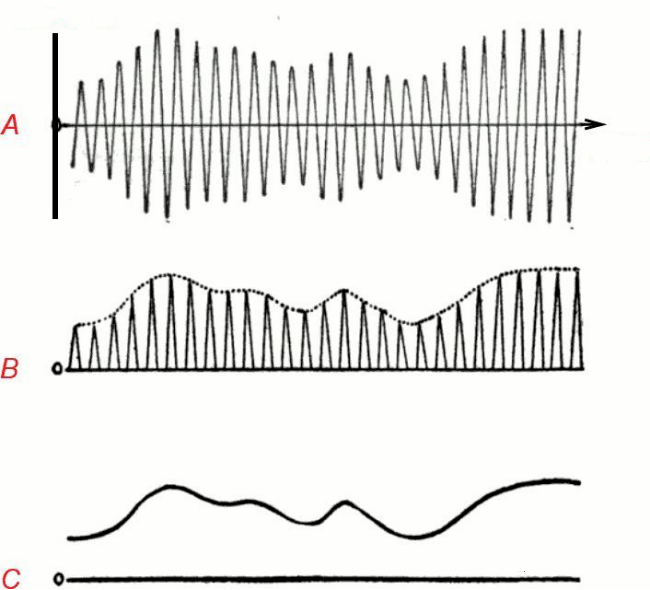
By removing the negative half cycle, the current direction becomes consistent, making it easier to interpret.
To demodulate the signal, Fleming thought of the “Edison Effect” – could a new type of demodulator be designed based on the electron flow of the Edison Effect?
In this way, in 1904, the world’s first vacuum electronic diode was born under Fleming’s hands. At that time, this diode was also called the “Fleming Valve”. (Vacuum tube, also known as electron tube, is sometimes called “valve tube”).

The diode invented by Fleming
The structure of Fleming’s diode is actually very simple, consisting of a vacuum glass bulb with two electrodes: a cathode (Cathode), which can emit electrons when heated (cathode rays); and an anode (Anode), which can receive electrons.

Side-heated diode
The reason the glass tube is evacuated is to prevent gas ionization, which would affect normal electron flow and destroy the characteristic curve. (Evacuating also effectively reduces the oxidation loss of the filament.)
The appearance of the diode solved the needs for demodulation and rectification, which was a major breakthrough at that time. However, there was still room for improvement.
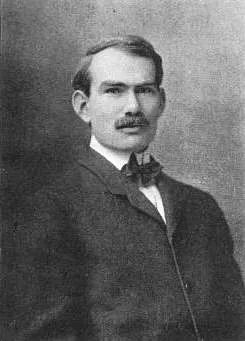
De Forest
In 1906, American scientist De Forest Lee cleverly added a grid plate (“grid”) in the vacuum electronic tube, inventing the vacuum triode.
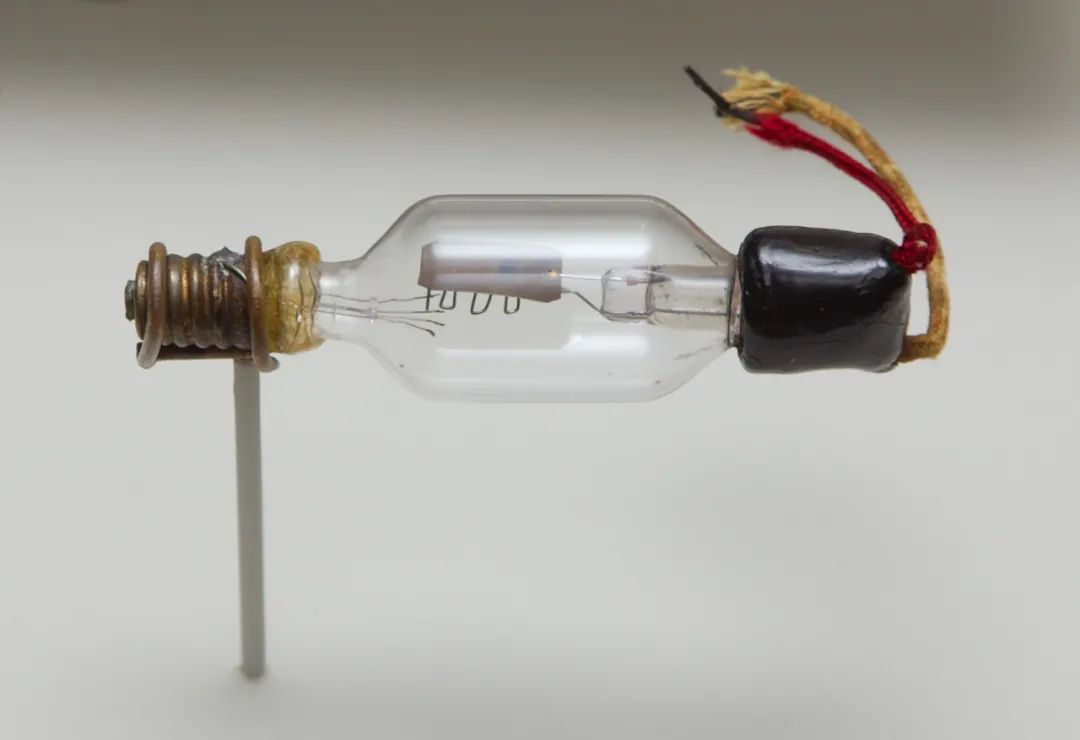
The triode invented by De Forest
After adding the grid, when the grid voltage is positive, it attracts more electrons emitted from the cathode. Most electrons pass through the grid to reach the anode, greatly increasing the current at the anode.
If the grid voltage is negative, the electrons on the cathode have no motivation to go to the grid, let alone reach the anode.
A small change in current at the grid can cause a large change in current at the anode. Moreover, the change waveform is completely consistent with the grid current. Therefore, the triode has the effect of amplifying signals.
The early triode was single-grid, later becoming dual-grid with two plates clamped together, and later evolving into a fully enclosed grid.
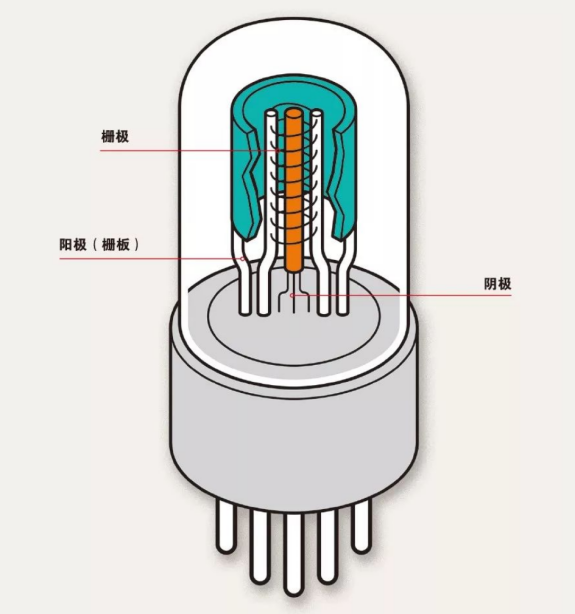
Enclosed grid
The birth of the vacuum triode was a milestone event in the field of electronics.
This small component truly realized the control of electricity with electricity (previously it was controlled by mechanical switches, which had problems such as low frequency, short lifespan, and easy damage), using “small current” to control “large current”.
It integrates the functions of demodulation, amplification, and oscillation, laying the foundation for the development of electronic technology.
Based on it, we have increasingly powerful radio stations, radios, phonographs, movies, transmitters, radar, and radio intercoms. The widespread popularity of these products has changed people’s daily lives and promoted social progress.
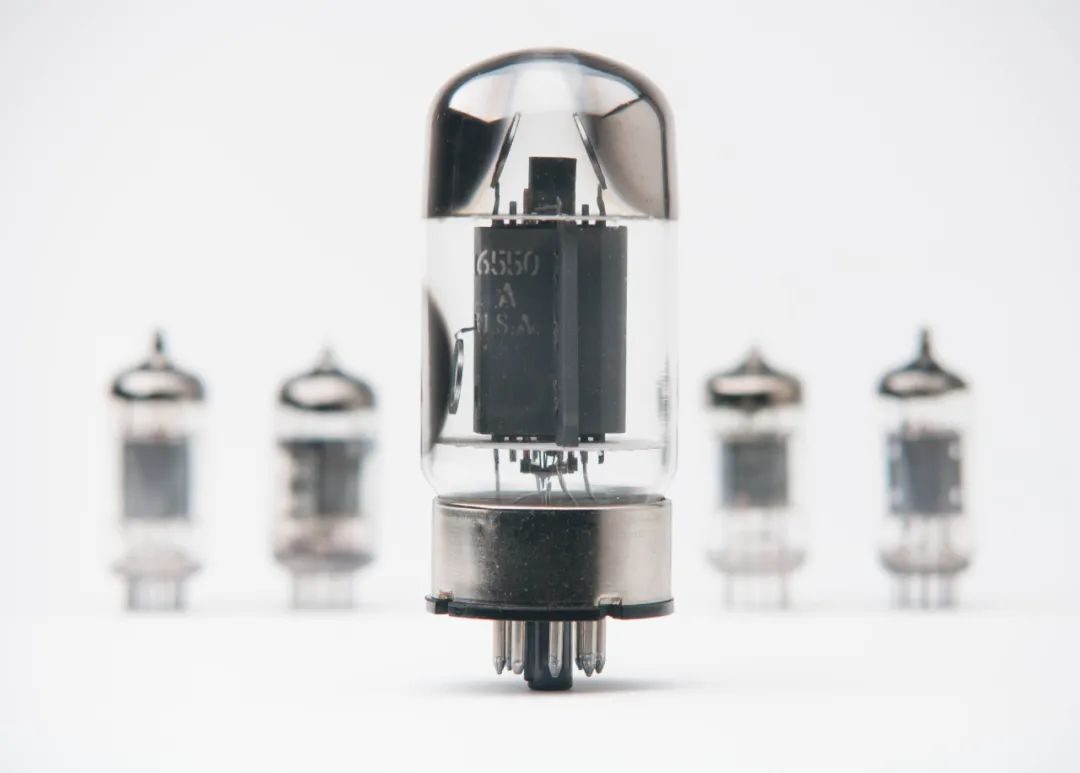
Vacuum tube
In 1919, Germany’s Schottky proposed the idea of adding a screen grid between the grid and the anode. This idea was realized by Britain’s Langdell in 1926. This led to the later invention of the tetrode. Later, Dutch scientists Holst and Teylegen invented the pentode.
In the 1940s, computer technology research reached a climax. People discovered that the unidirectional conduction characteristic of electron tubes could be used to design some logic circuits (such as AND gate circuits and OR gate circuits).
Thus, they began to introduce electron tubes into the field of computers. At that time, almost all electronic computers, including ENIAC (which used more than 18,000 electron tubes), were made based on electron tubes.
Here, let’s briefly talk about gate circuits.
When we learn the basics of computers, we must have learned basic logic operations, such as AND, OR, NOT, XOR, XNOR, NAND, and NOR.
Computers only recognize 0 and 1. Their calculations are based on these logic operation rules.
For example, 2 + 1 is represented in binary as 0010 + 0001, performing an “XOR operation”, resulting in 0011, which is 3.
The circuits that implement these logic gate functions are called logic gate circuits. The unidirectional conductive electron tubes (vacuum tubes) can be combined to form various logic gate circuits.
For example, the “OR gate circuit” and “AND gate circuit” below.
A and B are inputs, F is the output
While electron tubes were rapidly developing and being applied, people gradually discovered that this product had some drawbacks:
On one hand, electron tubes are prone to damage and have a high failure rate; on the other hand, they need to be heated for use, wasting a lot of energy in heating and resulting in extremely high power consumption.
Therefore, people began to think – is there a better way to achieve the demodulation, rectification, and signal amplification of circuits?
Of course, there are methods. At this time, a great material was about to emerge – semiconductors.
-
The Emergence of Semiconductors
Let’s move the timeline further back to the 18th century.
In 1782, the famous Italian physicist Alessandro Volta summarized through experiments that solid materials can be roughly divided into three types:
The first type, metals like gold, silver, copper, and iron, which conduct electricity easily, are called conductors;
The second type, materials like wood, glass, ceramics, and mica, which do not conduct electricity easily, are called insulators;
The third type, which is between conductors and insulators, can slowly discharge.
Volta named this peculiar property of the third type of material “Semiconducting Nature”, marking the first appearance of the term “semiconductor” in human history.
Later, several scientists, intentionally or unintentionally, discovered some phenomena related to semiconductor properties. For example:
In 1833, Michael Faraday discovered that the resistance of silver sulfide decreases when the temperature rises (the thermosensitive property of semiconductors).
In 1839, French scientist Alexandre Edmond Becquerel discovered that light could create a potential difference across certain materials (the photovoltaic effect of semiconductors).
In 1873, Willoughby Smith discovered that the conductivity of selenium increases under light exposure (the photoconductive effect of semiconductors).
These phenomena were not explained at the time and did not attract much attention.
In 1874, German scientist Karl Ferdinand Braun discovered the unidirectional conduction characteristic of natural mineral ores (metal sulfides). This was a huge milestone.
In 1906, American engineer Greenleaf Whittier Pickard invented the famous crystal detector based on brass ore crystals, also known as the “cat whisker detector” (because the probe on the detector resembles a cat’s whisker).
The crystal detector was the earliest semiconductor device created by humanity. Its emergence was a “trial run” for semiconductor materials.
Although it had some defects (poor quality control, unstable operation due to low purity of the ore), it greatly promoted the development of electronic technology. At that time, radio receivers based on crystal detectors facilitated the popularity of broadcasting and radio telegraphy.
-
The Emergence of Band Theory
People were using crystal detectors but could not understand their working principles. For more than 30 years afterward, scientists repeatedly pondered – why do semiconductor materials exist? Why can semiconductor materials achieve unidirectional conduction?
In the early days, many people even doubted whether semiconductor materials really existed. The famous physicist Pauli once stated: “People should not study semiconductors; it’s a dirty mess, and who knows if semiconductors exist.”
Later, with the birth and development of quantum mechanics, theoretical research on semiconductors finally made breakthroughs.
In 1928, German physicist Max Karl Ernst Ludwig Planck, one of the founders of quantum mechanics, proposed the solid band theory while applying quantum mechanics to study the conductivity of metals.
Father of Quantum Theory, Planck
He believed that under the influence of an external electric field, semiconductor conduction is divided into conduction involving “holes” (i.e., P-type conduction) and conduction involving electrons (i.e., N-type conduction). Many of the peculiar properties of semiconductors are jointly determined by “holes” and electrons.
Later, the band theory was further refined to systematically explain the essential differences between conductors, insulators, and semiconductors.
Let’s briefly understand the band theory.
As we learned in high school physics, objects are composed of molecules and atoms, and the outer layer of atoms consists of electrons.
The atoms of solid objects are closely packed, causing the electrons to mix together. Quantum mechanics posits that electrons cannot remain in a single orbit and will “collide”. Thus, the orbit splits into several finer orbits.
In quantum mechanics, these finer orbits are called energy levels, while the wide orbits formed by multiple finer orbits are called energy bands.
In two energy bands, the lower one is the valence band, the upper one is the conduction band, and the middle one is the forbidden band. The distance between the valence band and the conduction band is called the band gap.
Electrons moving in wide orbits manifest as conductivity on a macroscopic level. If there are too many electrons filling the orbit, they cannot move, and on a macroscopic level, it manifests as non-conductivity.
Some filled orbits and empty orbits are close enough that electrons can easily jump from a filled orbit to an empty one, allowing free movement, which is characteristic of conductors.
When two orbits are too far apart, with too large a gap, electrons cannot cross over, resulting in an inability to conduct electricity. However, if external energy is applied, this state can be altered.
If the band gap is within 5 electron volts (5eV), providing additional energy to electrons allows them to jump and move freely, indicating conduction. This is characteristic of semiconductors. (Silicon’s band gap is about 1.12eV, while germanium’s is about 0.67eV.)
If the band gap exceeds 5 electron volts (5eV), under normal circumstances, electrons cannot cross over, indicating an insulator. (If a very high external energy is applied, it can forcibly help electrons cross over. For example, air is an insulator, but high voltage can break through air, forming a current.)
It is worth mentioning that the “wide bandgap semiconductors” we often hear about include third-generation semiconductor materials such as silicon carbide (SiC), gallium nitride (GaN), zinc oxide (ZnO), diamond, and aluminum nitride (AlN).
They have advantages such as wide bandgap (>2.2eV), high breakdown electric field, high thermal conductivity, strong radiation resistance, high luminous efficiency, and high frequency, making them suitable for high-temperature, high-frequency, radiation-resistant, and high-power devices, which is a major direction of industry development.
Earlier, we mentioned electrons and holes. There are two types of charge carriers in semiconductors: free electrons and holes. Free electrons are familiar, but what are holes?
Holes are also known as electron holes.
At room temperature, due to thermal motion, a small number of electrons with high energy at the top of the valence band may cross the forbidden band and rise to the conduction band, becoming “free electrons”.
When electrons leave, they create a “hole”. The remaining electrons that have not migrated can enter this “hole”, generating a current. Note that the holes themselves do not move, but the process of filling the hole with electrons creates the effect of positive charge flow, so they are also considered as charge carriers.
In 1931, British physicist Charles Thomson Rees Wilson proposed a physical model for semiconductors based on band theory.
In 1939, Soviet physicist A.S. Davydov, British physicist Nevill Francis Mott, and German physicist Walter Hermann Schottky all contributed to the foundational theory of semiconductors. Davydov was the first to recognize the role of minority carriers in semiconductors, while Schottky and Mott proposed the famous “diffusion theory”.
Based on the contributions of these luminaries, the foundational theory of semiconductors gradually took shape.
-
The Birth of the Transistor
After the crystal detector was born, scientists discovered that the performance of this detector was greatly related to the purity of the crystal. The higher the purity of the crystal, the better the performance of the detector.
Therefore, many scientists conducted research on purifying mineral materials (such as lead sulfide, copper sulfide, copper oxide, etc.), continuously refining the purification process.
In the 1930s, scientists at Bell Labs, Russell Shoemaker Ohl proposed that detectors made from purified crystalline materials would completely replace electron diodes. (At that time, electron tubes were in absolute market dominance.)
Russell Ohl, the father of modern solar cells
After testing over a hundred materials one by one, he concluded that silicon crystals were the ideal material for making detectors. To verify his conclusion, he, with the help of his colleague Jack Scaff, extracted high-purity silicon crystal alloy.
Because Bell Labs did not have silicon crystal cutting capabilities, Ohl sent the alloy to a jewelry store to be cut into different sizes of crystal samples.
Unexpectedly, one of the samples, after exposure to light, exhibited a positive charge on one end and a negative charge on the other end. Ohl named them the P region and N region, respectively. Thus, Ohl invented the world’s first semiconductor P-N junction.
During World War II, Western Electric Company, a subsidiary of AT&T, manufactured a batch of silicon crystal diodes based on purified semiconductor crystals. These diodes were compact, low-failure, and greatly improved the performance and reliability of Allied radar systems.
Ohl’s invention of the P-N junction and the excellent performance of silicon crystal diodes solidified Bell Labs’ determination to develop transistor technology.
In 1945, William Shockley of Bell Labs, after communicating with Russell Ohl, drew the energy band diagram of P-type and N-type semiconductors based on band theory and proposed the “field effect hypothesis”.
Shockley’s field effect hypothesis
He hypothesized that the internal charges of silicon chips could move freely, and if the chip is thin enough, under the influence of applied voltage, electrons or holes within the chip would emerge at the surface, significantly enhancing the conductivity of the silicon chip, thus achieving current amplification.
Based on this hypothesis, on December 23, 1947, John Bardeen and Walter Brattain of Bell Labs created the world’s first semiconductor transistor amplifier. This was the oddly-shaped and simple device shown below:
The world’s first transistor (based on germanium semiconductor)
According to experimental records, this transistor could achieve “voltage gain of 100, power gain of 40, current loss of 1/2.5…”, performing exceptionally well.
When naming it, Bardeen and Brattain believed that the reason this device could amplify signals was due to its resistance transformation characteristics, from “low-resistance input” to “high-resistance output”. Thus, they named it trans-resistor (transistor). Later, it was abbreviated as transistor.
Years later, the famous Chinese scientist Qian Xuesen defined its Chinese name as: 晶体管 (Transistor).
In summary, semiconductor properties represent a special conductivity (affected by external factors). Materials with semiconductor properties are called semiconductor materials. Silicon and germanium are typical semiconductor materials.
On a microscopic level, substances arranged in a certain orderly manner are called crystals. Silicon crystals can exist in forms such as single crystal, polycrystalline, and amorphous.
The form of the crystal determines the energy band structure, and the energy band structure determines the electrical properties. Therefore, silicon (germanium) crystals, as semiconductor materials, have great application value.
Diodes, transistors, and tetrodes are named based on their functions. Electron tubes (vacuum tubes) and transistors (silicon transistors, germanium transistors) are named based on their principles.
The transistor invented by Bardeen and Brattain should actually be called point-contact transistor. From the diagram below, it can be seen that this design is overly simplistic. Although it achieved amplification, its structure is fragile, sensitive to external vibrations, and difficult to manufacture, lacking commercial application capability.
Shockley recognized this flaw and began to research new transistor designs in seclusion.
On January 23, 1948, after more than a month of effort, Shockley proposed a new transistor model with a three-layer structure, naming it junction transistor.
Shockley’s junction transistor design
Helping Shockley complete the final product was Morgan Sparks and Gordon Kidd Teal.
It should be particularly noted about Gordon Teal.
He discovered that using single crystal semiconductors instead of polycrystalline could bring significant performance improvements. Furthermore, he was the one who found that the Czochralski method could be used to purify metal single crystals. This method has been continuously used and is now the main method for producing single crystals in the semiconductor industry.
The birth of the transistor has extremely important significance for the development of human technology.
It possesses the capabilities of electron tubes while overcoming all the shortcomings of electron tubes, such as large size, high energy consumption, low amplification factor, short lifespan, and high cost. From the moment it was born, it was destined to completely replace electron tubes.
Workers producing transistors
In the field of wireless communication, transistors, like electron tubes, can achieve the emission, demodulation, and amplification of electromagnetic waves. In the field of digital circuits, transistors can also facilitate the implementation of logic circuits. They laid a solid foundation for the leap of the electronics industry.
The ever-expanding family of transistors
The emergence of transistors made circuit miniaturization possible.
In 1952, the famous scientist Geoffrey Dummer from the British Royal Radar Research established stated at a conference:
“With the advent of transistors and comprehensive research on semiconductors, it seems conceivable that future electronic devices will be solid components without connecting wires.”
In August 1958, a new employee at Texas Instruments, Kilby, discovered that extremely small microcircuits composed of many devices could be made on a single chip. That is, different electronic devices (such as resistors, capacitors, diodes, and transistors) could be made on a silicon wafer and then connected with fine wires.
Shortly after, on September 12, Kilby successfully manufactured a germanium chip circuit measuring 7/16 inch long and 1/16 inch wide, which was also the world’s first integrated circuit (Integrated Circuit).
This circuit is a single transistor oscillator with RC feedback, and it looks very rudimentary, being glued to a glass slide. The components of the circuit are connected with messy fine wires.
While Kilby was inventing integrated circuits, another person was also making breakthroughs in this field. That person was Robert Norton Noyce of Fairchild Semiconductor (who later founded Intel).
Fairchild was a company founded by the “Traitor Eight” in Silicon Valley (see: The Legend of Fairchild), possessing strong capabilities in semiconductor technology.
One of the “Traitor Eight”, Jean Hoerni, invented the very important planar process.
This process involves adding a layer of silicon oxide as an insulating layer on the silicon wafer. Then, holes are punched in this insulating silicon oxide layer, and aluminum films are used to connect the devices made with silicon diffusion technology.
The emergence of the planar process allowed Fairchild to manufacture high-performance silicon crystal transistors of extremely small size, and also made it possible to connect devices in integrated circuits.
On January 23, 1959, Noyce wrote in his work notes:
“By manufacturing various devices on the same silicon wafer and then connecting them with the planar process, multifunctional electronic circuits can be created. This technology can reduce the volume of circuits, lighten weight, and lower costs.”
Upon learning that Kilby had submitted a patent for integrated circuits, Noyce felt very regretful, believing he was a step too late. However, he soon discovered that Kilby’s invention had some flaws.
Kilby’s integrated circuit used flying wire connections, which could not be mass-produced and lacked practical value.
To make all the circuits and individual components into a substrate, then etch them onto a silicon wafer. Once this silicon wafer is etched, it contains all the circuits and can be directly used for assembling products.Additionally, using metal evaporation deposition can replace thermal welding wires, completely eliminating flying wires.
Fairchild’s silicon crystal integrated circuit
On July 30, 1959, based on his ideas, Noyce applied for a patent for “semiconductor devices – wire structures”.
Strictly speaking, Noyce’s invention was closer to the modern understanding of integrated circuits. Noyce’s design was based on silicon substrate planar processes, while Kilby’s design was based on germanium substrate diffusion processes. Noyce’s circuits, made possible by Fairchild’s silicon process advantages, were indeed more advanced than Kilby’s.
In 1966, the court ultimately ruled that the idea of integrated circuits (hybrid integrated circuits) was granted to Kilby, while the invention rights for the integrated circuits encapsulated in a single chip (the truly integrated circuit) and its manufacturing process were granted to Noyce.
Kilby was hailed as the “inventor of the first integrated circuit”, while Noyce was recognized as the “one who proposed the theory of integrated circuits suitable for industrial production”.
In March 1960, Texas Instruments officially launched the world’s first commercial integrated circuit product – the 502 silicon bistable multivibrator, priced at $450.
After the birth of integrated circuits, the first applications were in the military field (at that time, it was the most sensitive period of the Cold War).
In 1961, the U.S. Air Force launched the first computer driven by integrated circuits. In 1962, integrated circuits were also used in the guidance system of the Minuteman ballistic missile.
Later, the famous Apollo moon landing program purchased over a million integrated circuits, leading to huge profits for Texas Instruments and Fairchild.
The success in the military market spurred the expansion of the civilian market.In 1964, Zenith Corporation used integrated circuits in hearing aids, marking the first civilian application of integrated circuits.
The story that followed is familiar to everyone. With the joint efforts of materials, processes, and manufacturing, the number of transistors in integrated circuits has continuously increased, performance has steadily improved, and costs have gradually decreased, leading us into the era of Moore’s Law.
Moore’s Law: The number of transistors that can be accommodated on an integrated circuit chip doubles approximately every 18 months, and performance also doubles.
The large-scale and ultra-large-scale integrated circuits developed based on integrated circuits have paved the way for the emergence of semiconductor storage and microprocessors.
In 1970, Intel launched the world’s first DRAM (dynamic random-access memory) integrated circuit 1103. The following year, they released the world’s first programmable computing chip, which included an arithmetic unit and a controller – the Intel 4004.
The golden age of IT technology officially began.
█ Evolution of Transistors
Looking back, transistors have undergone significant changes in form since their inception. In summary, they have shifted from bipolar to unipolar. In the case of unipolar, they have evolved from FET to MOSFET. From a structural perspective, they have transitioned from PlanarFET to FinFET, and then to GAAFET.
The abbreviations can be a bit overwhelming and quite similar, so it’s easy to get confused. Please be patient as we go through them one by one.
The junction transistor invented by Shockley in 1948, which uses both holes and electrons as charge carriers, is called a bipolar junction transistor (Bipolar Junction Transistor, BJT).
BJT transistors come in two structural forms: NPN and PNP:
We can see that the BJT transistor is made on a semiconductor substrate, creating two closely spaced PN junctions. The two PN junctions divide the semiconductor into three parts: the middle part is the base (Base), while the two sides are the emitter (Emitter) and collector (Collector).
The working principle of BJT transistors is relatively complex, and they are rarely used now. Due to space limitations, I will not elaborate further. Essentially, the main function of this transistor is to allow a small change in current at the base to produce a larger change in current at the collector, thus amplifying the signal.
Earlier, Xiaozao mentioned logic circuits. Circuits formed by combinations of diodes and BJT transistors are called DTL (Diode-Transistor Logic) circuits. Later, circuits entirely built from transistors appeared, known as TTL (Transistor-Transistor Logic) circuits.
BJT transistors have the advantages of high operating frequency and strong driving capability. However, they also have disadvantages, such as high power consumption and low integration. Their manufacturing process is also complex, and there are some drawbacks in the planar process.
As time went on, a new type of transistor began to emerge, known as the Field Effect Transistor (FET).
In 1953, Ian Ross and George Dacey at Bell Labs collaborated to produce the world’s first junction field effect transistor (JFET) prototype.
JFET (Junction Field Effect Transistor), this is an N-channel
JFET is a three-terminal semiconductor device that includes a source (Source), drain (Drain), and gate (Gate).
JFETs can be classified into N-channel (N-Channel) JFETs and P-channel (P-Channel) JFETs. The former consists of an N-type semiconductor with two P-type semiconductors on either side (as shown in the image above). The latter consists of a P-type semiconductor with two N-type semiconductors on either side.
The working principle of JFETs is simple: it controls the voltage between the gate G and the source S (shown as VGS in the image) and the voltage between the drain D and the source S (shown as VDS in the image), thus controlling the PN junction between the gate and the channel, and subsequently controlling the depletion layer.
The wider the depletion layer, the narrower the channel, the greater the channel resistance, and the smaller the drain current (shown as ID in the image) that can pass through. When the channel is completely covered by the depletion layer, it is in the cutoff state.
When JFETs operate, they only require one type of charge carrier, thus they are referred to as unipolar transistors.
In 1959, another new type of transistor was born, namely the MOSFET (Metal-Oxide-Semiconductor FET).
Its inventors are Egyptian scientist Mohamed Atala (renamed Martin Atala) and Korean scientist Dawon Kahng (also translated as Jiang Dayuan).
MOSFET also consists of a source, drain, and gate. The
